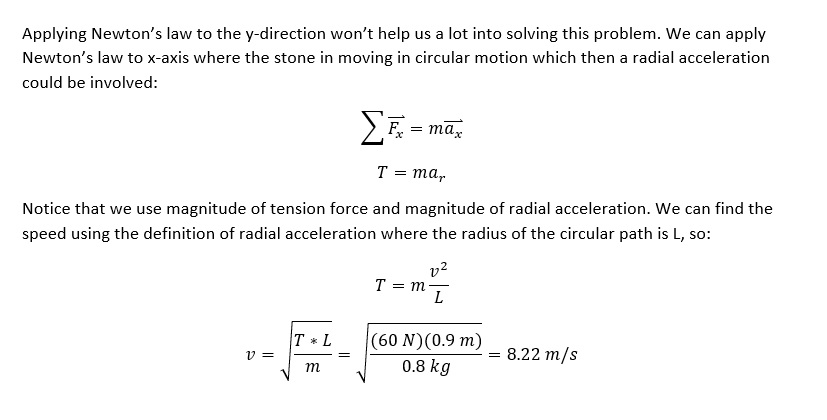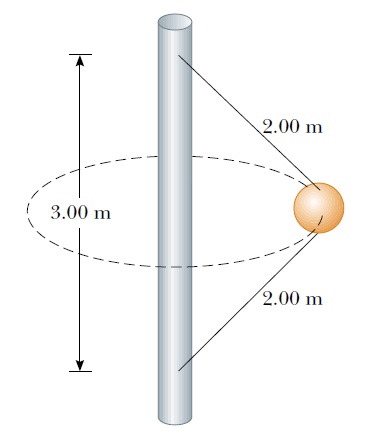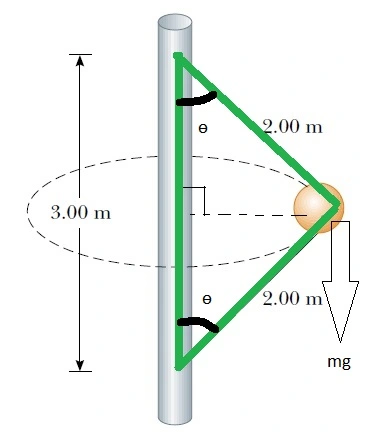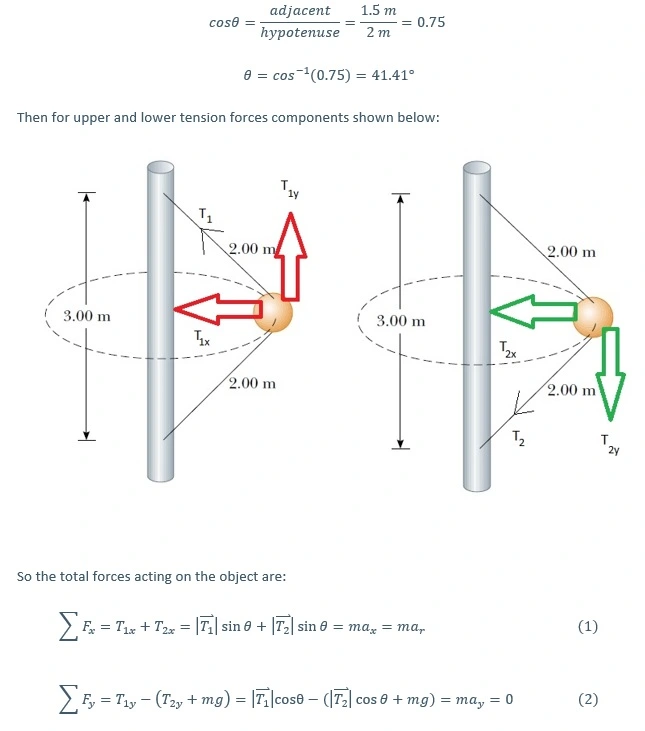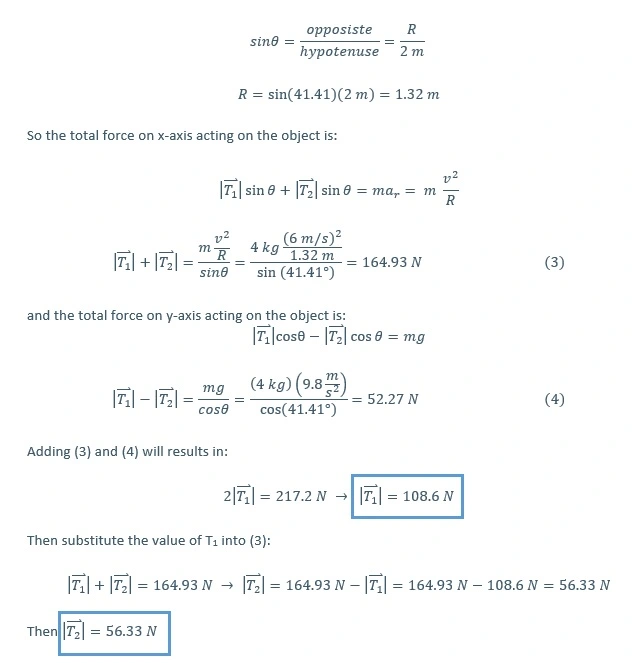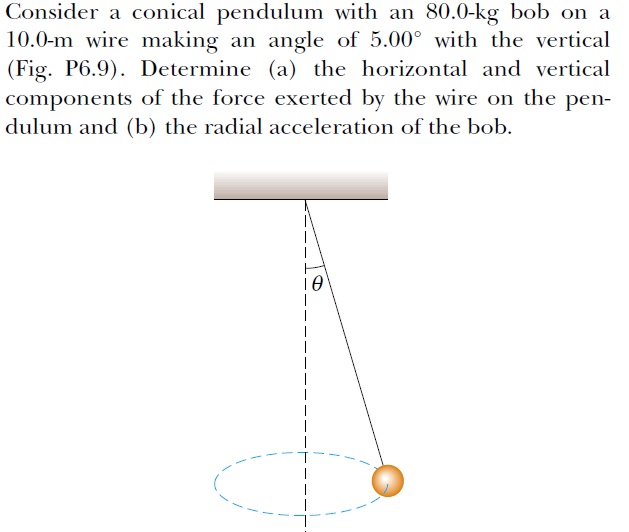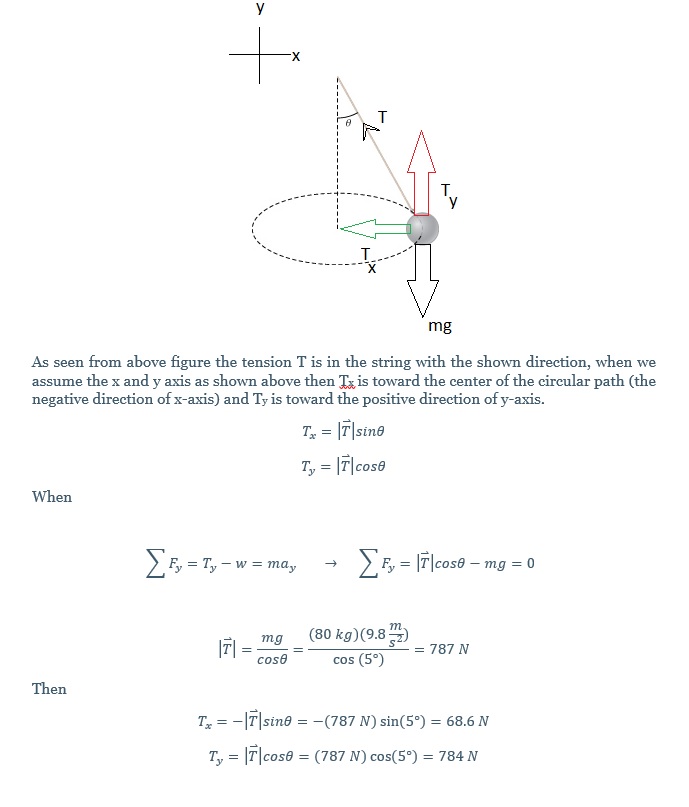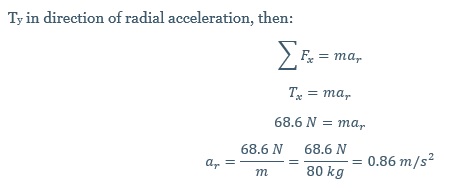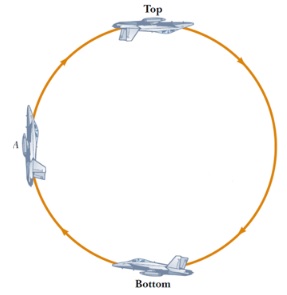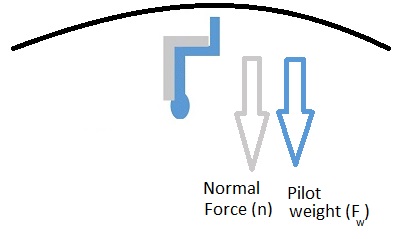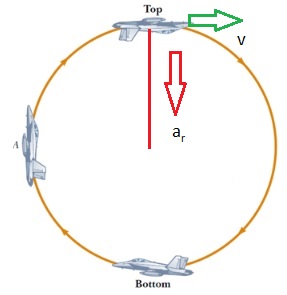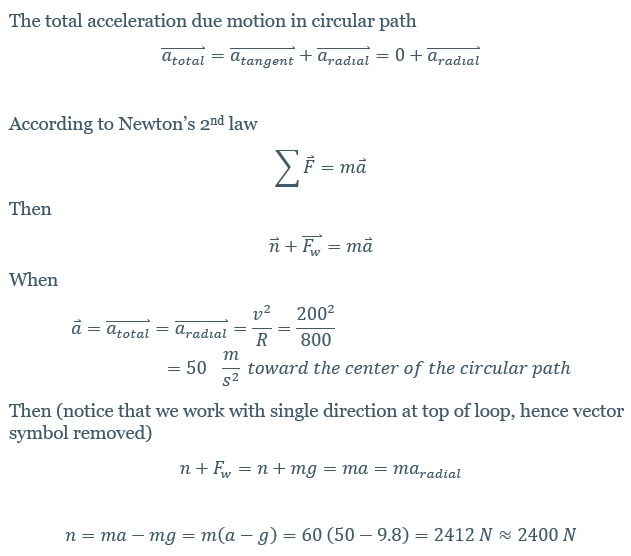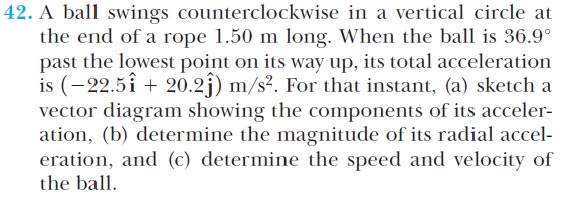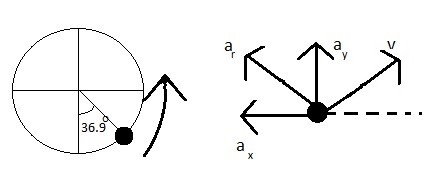A stone with mass 0.8 kg is attached to the end of 0.9 m string. The string will break if its tension exceeds 60 N. The stone is whirled in a horizontal circle on a frictionless tabletop; the other end of the string remains fixed. (a) draw a free body diagram of the stone. (b) Find the maximum speed the stone can attain without the string breaking.
Analyze the problem:
A stone is tied into an end of a string and then swung horizontally to move in circle. As the stone move in circular motion then a radial acceleration is involved. The string can uphold a tension force up to 60 N so there will be a maximum radial acceleration that when exceeded the string will break.
What are the given information?
- The stone mass, m=0.8 kg
- The string length, L= 0.9 m
- Maximum tension, T=60 N
What are the needed information?
- Body-diagram for the stone.
- maximum speed of stone so the string is not breaking
SOLUTION:
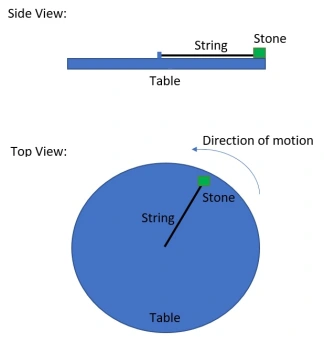
a)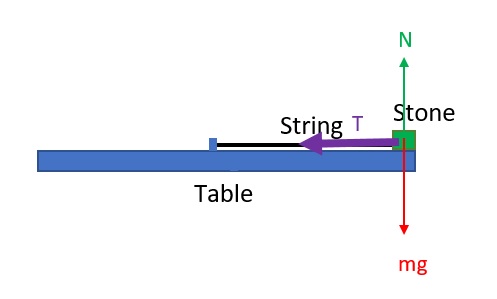 b)
b)
